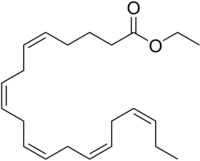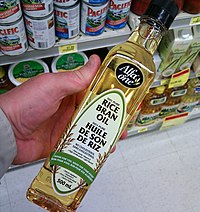
Interactive Effects of Omega-3 Polyunsaturated Fatty Acids and Secondhand Smoke in Mice and Human Subjects
Sign Up to like & getrecommendations! Published in 2020 at "Cardiovascular Toxicology"
DOI: 10.1007/s12012-020-09601-6
Abstract: Active smoking and secondhand smoke (SHS) exposure increase the risk of cardiovascular morbidity and mortality. Active smoking is associated with reduced levels of omega-3 polyunsaturated fatty acids (n-3 PUFA) and studies show that n-3 PUFA… read more here.
Keywords: shs exposure; omega index; mice; secondhand smoke ... See more keywords

Eight-week hempseed oil intervention improves the fatty acid composition of erythrocyte phospholipids and the omega-3 index, but does not affect the lipid profile in children and adolescents with primary hyperlipidemia.
Sign Up to like & getrecommendations! Published in 2019 at "Food research international"
DOI: 10.1016/j.foodres.2018.12.045
Abstract: Children affected by primary hyperlipidemia have a high risk of developing cardiovascular diseases (CVDs) during adulthood. Several studies have reported a positive association between the intake of polyunsaturated fatty acids (PUFAs) and improvements in lipid… read more here.
Keywords: lipid profile; intervention; primary hyperlipidemia; omega index ... See more keywords

Omega-3 index in 2018/19
Sign Up to like & getrecommendations! Published in 2020 at "Proceedings of the Nutrition Society"
DOI: 10.1017/s0029665120006989
Abstract: The omega-3 index, the percentage of EPA plus DHA in erythrocytes (measured by standardised analysis), represents a human body's status in EPA and DHA. An omega-3 index is measured in many laboratories around the world;… read more here.
Keywords: omega index; epa dha; index 2018; index ... See more keywords

Plasma BDNF is a more reliable biomarker than erythrocyte omega-3 index for the omega-3 fatty acid enrichment of brain
Sign Up to like & getrecommendations! Published in 2020 at "Scientific Reports"
DOI: 10.1038/s41598-020-67868-9
Abstract: Enriching brain DHA is believed to be beneficial for the prevention and treatment of several neurological diseases, including Alzheimer’s disease. An impediment in assessing the effectiveness of the treatments is the lack of a reliable… read more here.
Keywords: index; biomarker; plasma bdnf; omega index ... See more keywords

EFFICACY OF A LIPID-LOWERING DIET ON KEY FATTY ACID RATIOS AND OMEGA-3 INDEX IN HYPERLIPIDEMIC SUBJECTS
Sign Up to like & getrecommendations! Published in 2022 at "Acta Clinica Croatica"
DOI: 10.20471/acc.2022.61.02.08
Abstract: SUMMARY Polyunsaturated fatty acid (PUFA) dietary intake, status and serum key fatty acid (FA) ratios may aid in cardiovascular disease-related risk assessment. The aim of this study was to investigate the effects of lipid-lowering diet… read more here.
Keywords: lowering diet; key fatty; omega index; lipid lowering ... See more keywords

Blood Omega-3 Fatty Acids Are Inversely Associated With Albumin-Creatinine Ratio in Young and Healthy Adults (The Omega-Kid Study)
Sign Up to like & getrecommendations! Published in 2021 at "Frontiers in Cardiovascular Medicine"
DOI: 10.3389/fcvm.2021.622619
Abstract: Background: Omega-3 fatty acids are associated with a lower risk of cardiovascular disease (CVD) and with beneficial effects on CV risk factors. The albumin-creatinine ratio (ACR) is a risk factor for CVD, all-cause mortality and… read more here.
Keywords: creatinine; acr; fatty acids; omega fatty ... See more keywords

Effect of Oral Docosahexaenoic Acid (DHA) Supplementation on DHA Levels and Omega-3 Index in Red Blood Cell Membranes of Breast Cancer Patients
Sign Up to like & getrecommendations! Published in 2017 at "Frontiers in Physiology"
DOI: 10.3389/fphys.2017.00549
Abstract: Rationale: Docosahexaenoic acid (DHA) in cell membrane may influence breast cancer (BC) patients' prognosis, affecting tumor cells sensitivity to chemo- and radio-therapy and likely modulating inflammation. The possibility of identifying BC patients presenting with low… read more here.
Keywords: supplementation; dha; omega index; dha levels ... See more keywords

Beneficial Effects of Table Grape Use on Serum Levels of Omega-3 Index and Liver Function: A Randomized Controlled Clinical Trial
Sign Up to like & getrecommendations! Published in 2022 at "Biomedicines"
DOI: 10.3390/biomedicines10092310
Abstract: This clinical trial was aimed to investigate the effects of fresh table grape intake on the serum levels of the Omega-3 index, defined as the sum of eicosapentaenoic acid (EPA) + docosahexaenoic acid (DHA) levels.… read more here.
Keywords: grape; table grape; serum; serum levels ... See more keywords

Optimization of Omega-3 Index Levels in Athletes at the US Naval Academy: Personalized Omega-3 Fatty Acid Dosage and Molecular Genetic Approaches
Sign Up to like & getrecommendations! Published in 2022 at "Nutrients"
DOI: 10.3390/nu14142966
Abstract: The Dietary Guidelines for Americans recommend increasing the intake of omega-3 polyunsaturated fatty acids. The Omega-3 Index (O3I) is one marker used to assess omega-3 status. The O3I national average is 4.3%, which translates into… read more here.
Keywords: omega supplementation; dosage; fatty acid; omega index ... See more keywords

Association between Omega-3 Index and Hyperglycemia Depending on Body Mass Index among Adults in the United States
Sign Up to like & getrecommendations! Published in 2022 at "Nutrients"
DOI: 10.3390/nu14204407
Abstract: There is inconsistency regarding the association between long-chain n-3 polyunsaturated fatty acids such as eicosapentaenoic acid (EPA; 20:5n3) and docosahexaenoic acid (DHA; 22:6n3) and the risk of type 2 diabetes. The present study aimed to… read more here.
Keywords: index; association omega; omega index; body mass ... See more keywords

Impact of Biological Feedback and Incentives on Blood Fatty Acid Concentrations, Including Omega-3 Index, in an Employer-Based Wellness Program
Sign Up to like & getrecommendations! Published in 2017 at "Nutrients"
DOI: 10.3390/nu9080842
Abstract: Eicosapentaenoic acid (EPA, C20:5n-3) and docosahexaenoic acid (DHA, C22:6n-3) are important fatty acids for the retina and brain. More than 95% of Americans have suboptimal EPA + DHA blood concentrations. This cross-sectional employer-based study assessed… read more here.
Keywords: index; fatty acid; employer based; omega index ... See more keywords